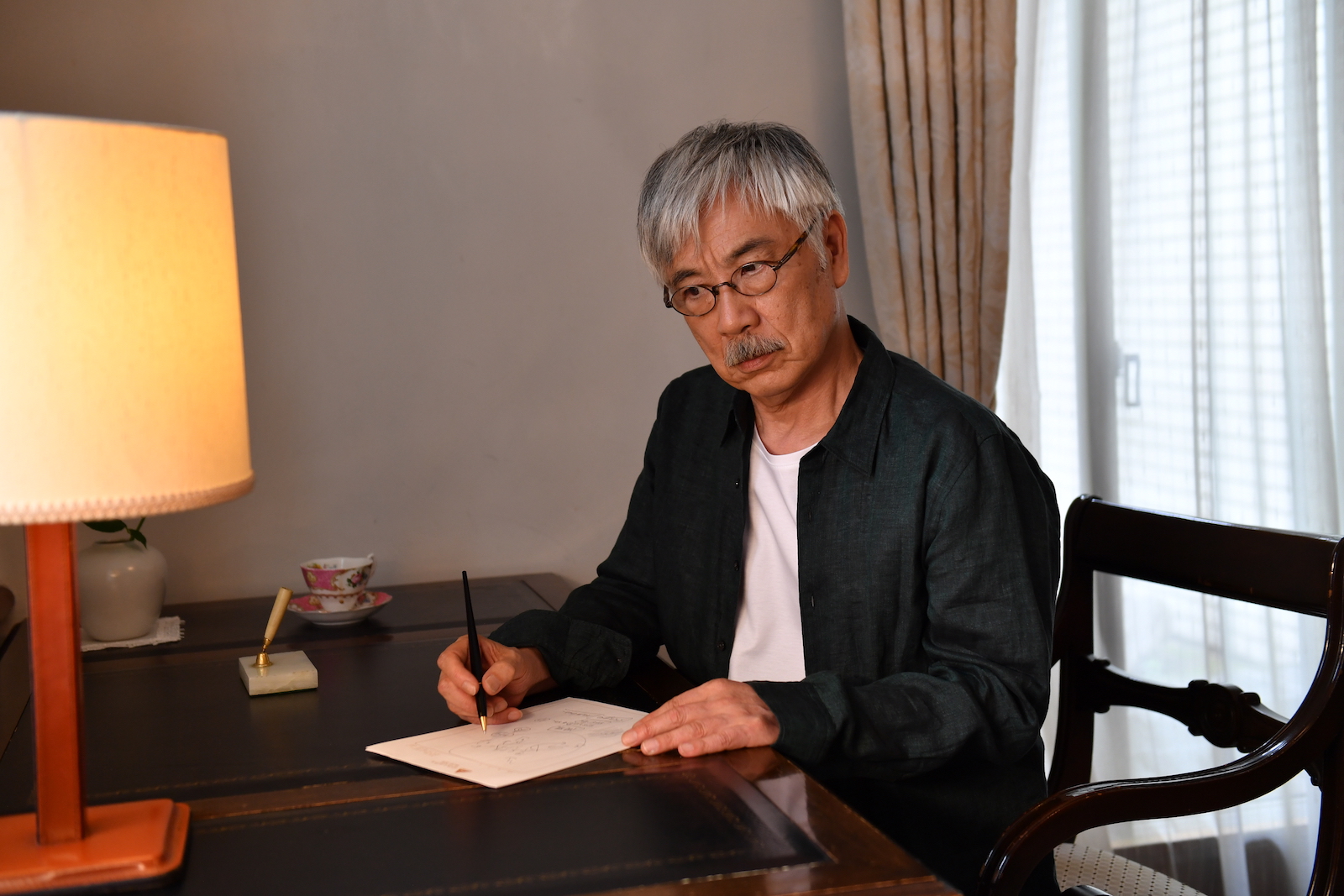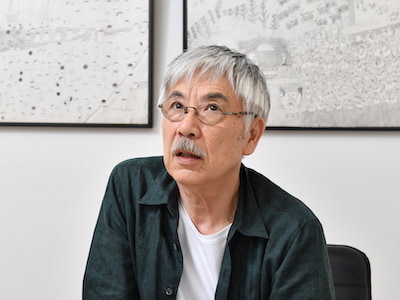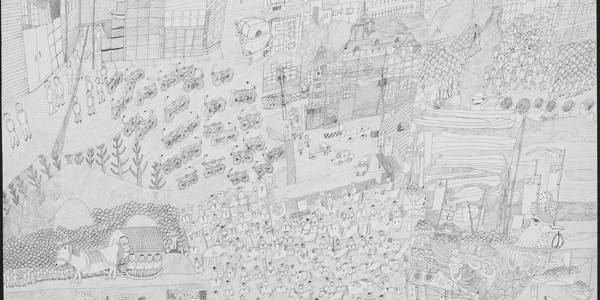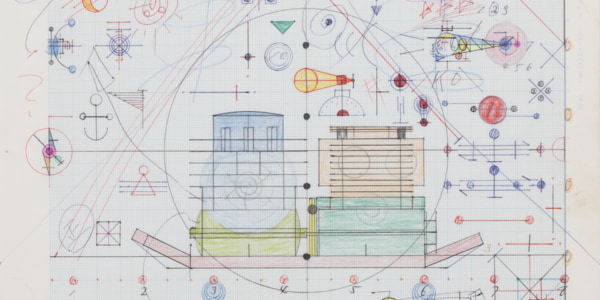Co-starring
SHUJI Takashi (1974-2021)
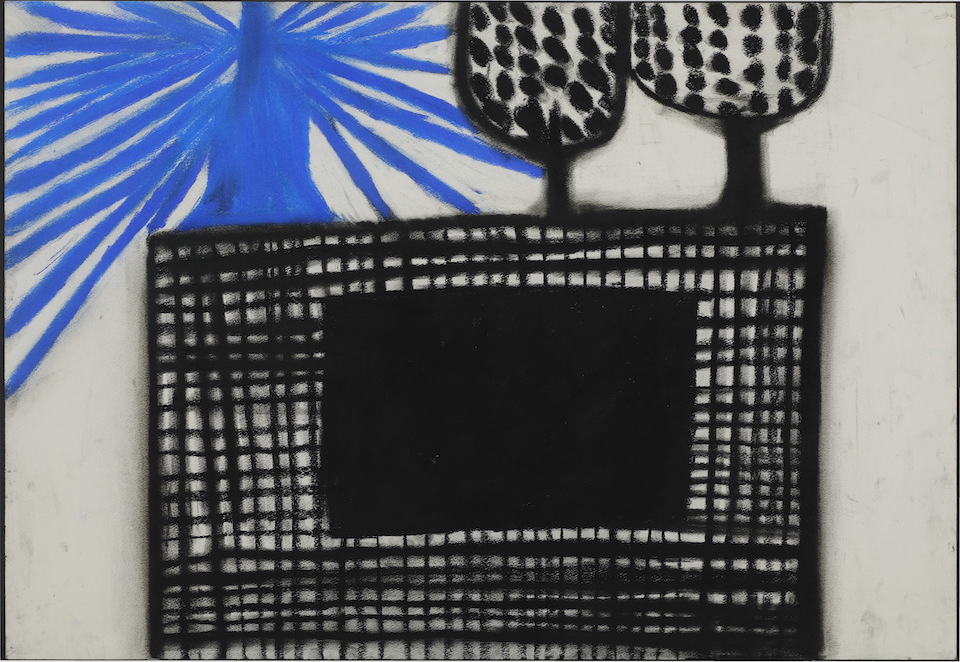
“Flower in Flower Vase, Basket and Lotus Seeds” / 546×790mm / Pastels on watercolor paper / 2007 / Collection of The Nippon Foundation
Sometimes I find my point of entrance looking at the first picture and, as I go deeper and deeper from there, a story develops and becomes a fairytale.
For this picture, my way in was “black.” There’s also blue in the picture, but the black is on a different level. So, now that I was in, I wondered where I was, and I realized it was a prison.
And the blue was a gaze like a beam of light monitoring everything.This prison was built as a round building with a watchtower in the center. This was so that all of the prisoners could be monitored from the watchtower. From the perspective of the prison guards, their gaze shoots out like arrows, while from the perspective of the prisoners, their gaze is like a shining blue light. And this picture depicts solitary confinement.
So, what kind of prison is it? It is a “two-dimensional prison.” It imprisons shadows. And when I say shadows, I don’t mean metaphorically, but literally shadows. There are “shadow police,” far scarier than any police in our world, and their eyes shine with light. They catch bad shadows.
It seems that, depending on the severity of their crimes, the shadows may be tortured with these devices.
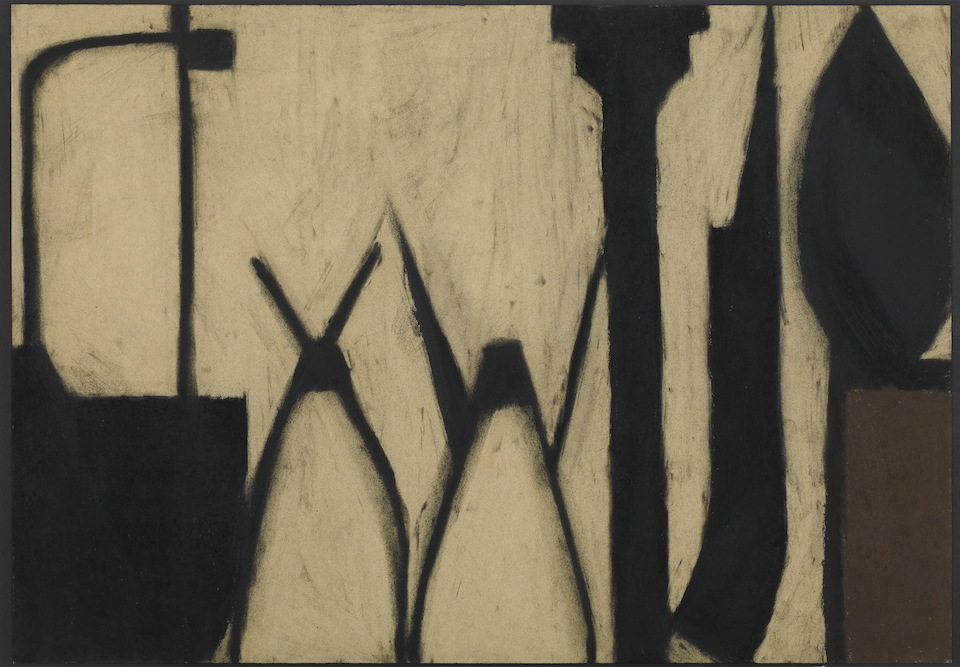
“Saw, Pliers, Screw Driver, Hammer and Trowel” / 540×769mm / Pastels on cardstock / 2007 / Collection of The Nippon Foundation
Rumor has it among the shadows that if you resist, you’ll be pulled and sawed and scraped and snipped, and they all cower in fear.
And more, there is a rumor that even if one is spared these, one will be eaten by a giant monster. Night after night, the monster skulks around the prison seeking food. They let it roam free!
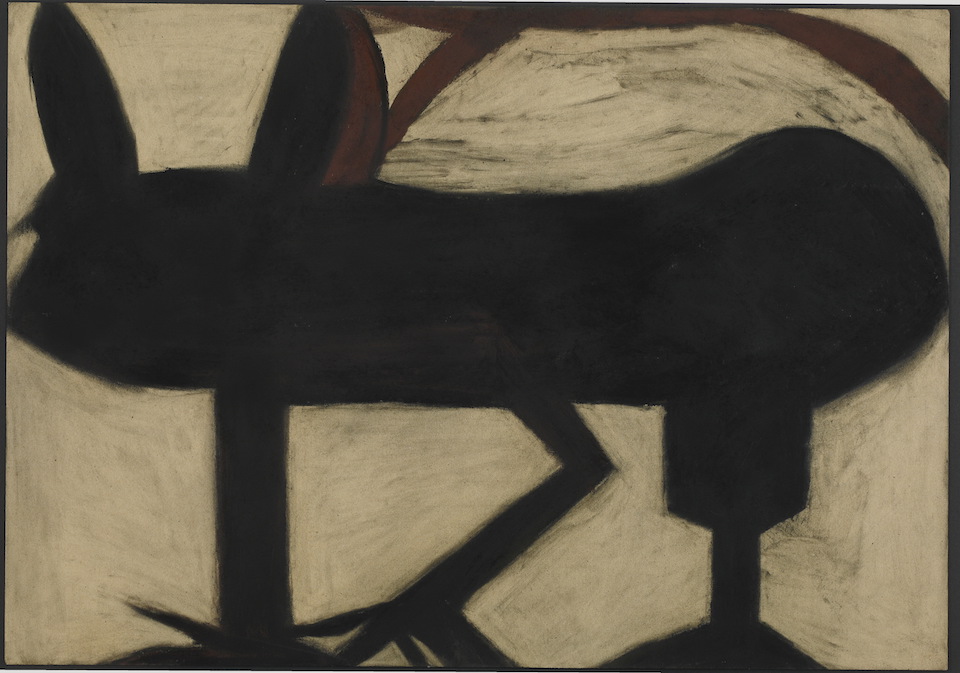
“Rabbit and Driftwood” / 540×769mm / Pastels on cardstock / 2008 / Collection of The Nippon Foundation
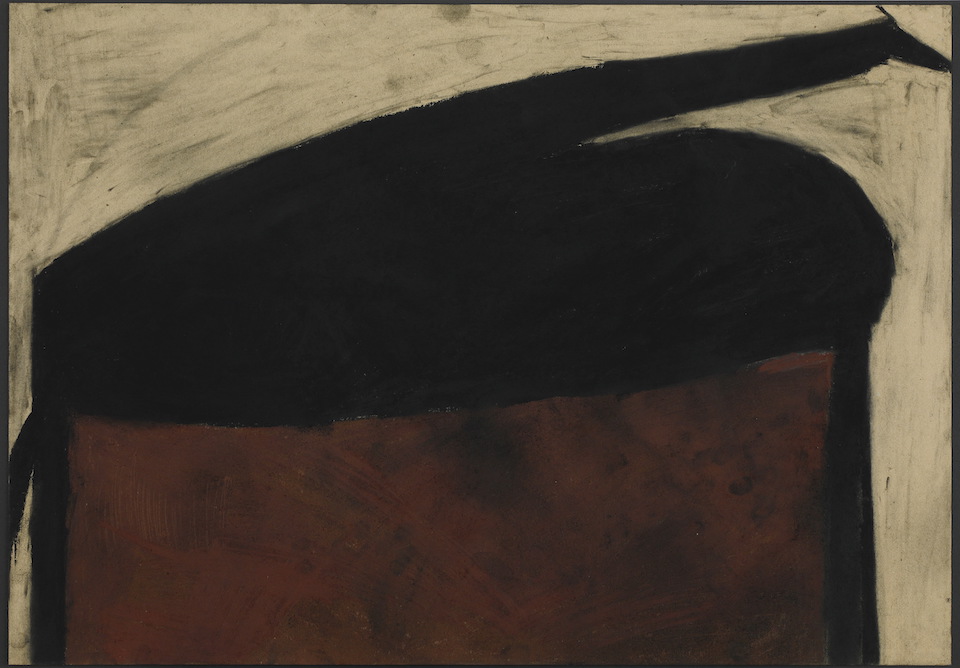
“Giraffe 1” / 540×769mm / Pastels on cardstock / 2007 / Collection of The Nippon Foundation
However, it is not clear whether that ghastly monster and the giant stapler actually exist. Because the prisoners are just shadows, they can’t see real things. They can only see shadows.
And then I realize. There are shadows because there are people. When the shadows are taken to the prison, what happens to people’s shadows? The people’s shadows are, in fact, replacement shadows. Fake shadows are put on the people, and the real shadows are put in the two-dimensional prison.
Which might mean that almost all of the shadows of the people of the world are in the two-dimensional prison. And having said that, it seems there were people who felt that a real shadow was more lively, that their shadow used to talk to them all the time but lately their shadow is just a shadow. People’s shadows used to talk directly to people, you see.
The reason why people can’t do that nowadays may be because their real shadows are in the two-dimensional prison. And those shadows are living in fear, surrounded by scary things. But almost no one knows this and most people just go about living their lives as usual. Those poor, poor shadows.
What we thought were shadows were actually mock-shadows. Shadows used to sometimes pop out and break into the third dimension from the second dimension.
Maybe that’s why they were put in the prison? I don’t know. I don’t know the standards for what is bad and good in the world of shadows. Moreover, I don’t know who is running the prison, or why they have a surveillance system like they do.
If I were the warden of the shadow prison, I would probably say something like, “We only copy what you do. The people of the third dimension. You are above the second dimension, so please don’t ask me.”
Caught by the two-dimensional police, put in the two-dimensional prison, and finally stapled with a stapler so they can’t move. But that’s just a shadow rumor. And shadow rumors don’t last long. Everyone forgets them pretty quickly. Other, different scary rumors will soon spread through the prison like wildfire.A cycle that goes on and on…
Issey Ogata’s Wildly Imaginative Art Appreciation Techniques
As actor, playwright, and director of his one-man show, Issey Ogata brings new worlds to life every day. We asked him for tips on having fun with the power of unfettered imagination.
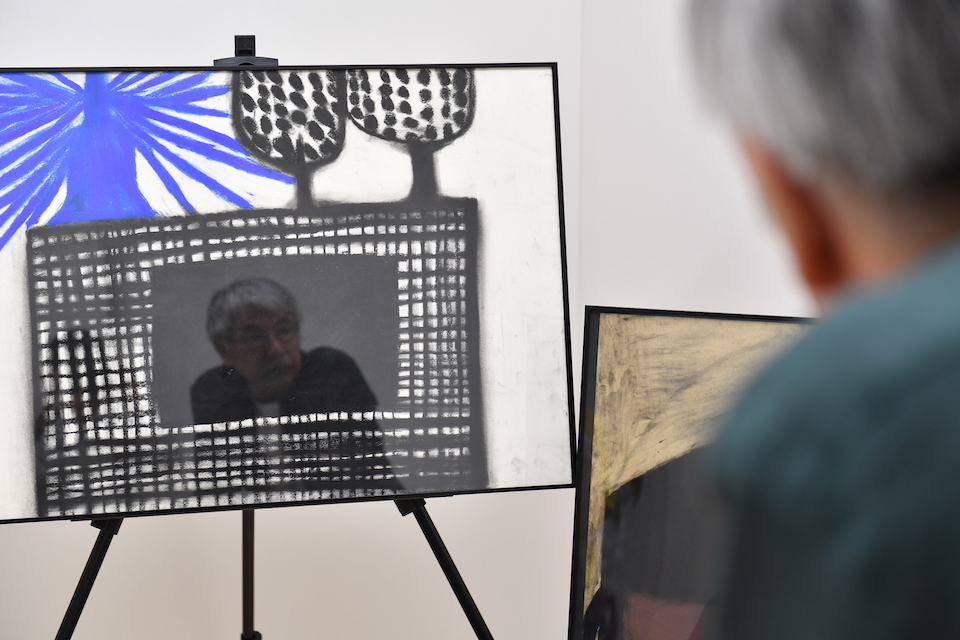
Pictures have the power to surprise me, and so I become surprised. When I become surprised, surprising developments occur in my wild imaginings.
I also draw pictures, and normally, when I am drawing a picture, just like when I am playing a character and thinking “what kind of person is this?” or “what would be interesting for this person to say?”, drawing and story creation become one.
Drawing a picture doesn’t take just a few seconds; so if I draw for an hour, a story develops in that time. Like some kind of mechanism working and realizing that if I do this, it responds like that, a story emerges. That’s why I really enjoy the time spent drawing. Because my mind doesn’t stop, stories and ideas spring forth one after another.
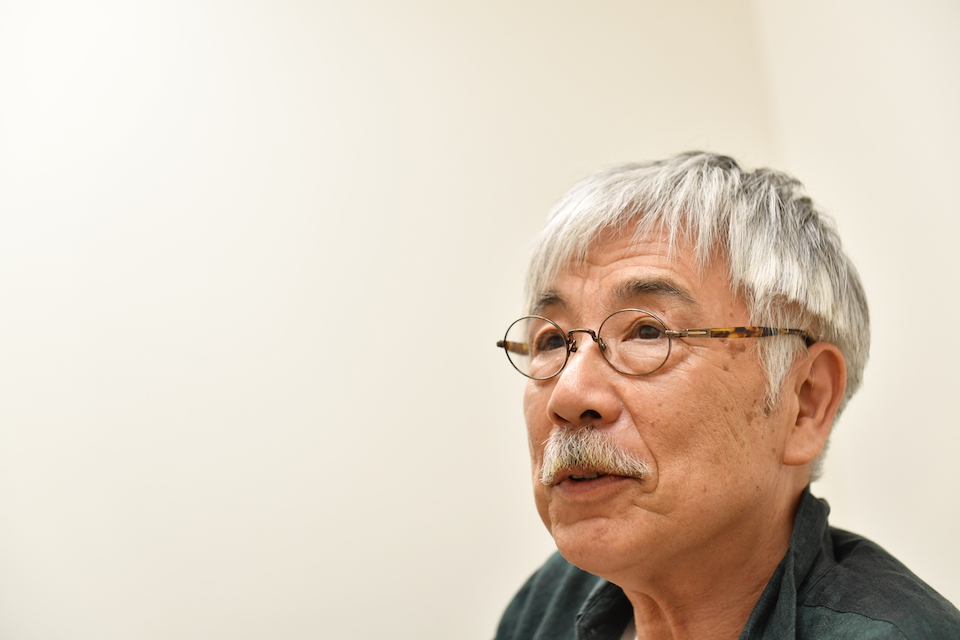
When I’m not drawing and engage in wild imagination, the first thing I do is look. And then I find my “entrance” by thinking about what my heart is most drawn to, what my eyes jump to first.
In the case of these pictures, it was “black.” And then I began to feel like I was being watched. Oh, it’s a prison. These were the most striking things to me, and then the story unfolded from there. I nurture the story so that it becomes more and more interesting. Pictures have the power to surprise me, and so I become surprised. And when I become surprised, surprising developments occur in my wild imaginings. I feel these occur simultaneously. I think that’s just how it is, actually. When things resonate like that is the most fun.
It’s different from when I’m thinking up material for a play.I think about what’s missing in breathing life into the character I’m playing and try to add that, or if there’s too much of something, reduce it. For example, working on material for a play about trying to fix an organization that is not working right, I’ll think of all kinds of things. There will be things that are lacking or superfluous, and so I’ll add things or subtract things, or maybe I’ll think about moving the character, or moving the character’s friend, and so on.
At this stage, instead of fleshing out the character’s personality, it’s enough to have a character which lacks something. Accordingly, when creating material for a play, creating a character’s personality or giving them characteristics is actually counterproductive. Although I create lots and lots of distinctive characters, haha.

Giving characteristics to a character is something I save to enjoy at the very end. Like a woman who suddenly screams “eeek!” or something, those kind of traits are something I add like a spice at the very end.
When people do too little or too much and become frantic, it can be funny, or sad, or even absurd. And I include myself in this. It can happen to anyone when they become too wrapped up in their thoughts and lose sight of the bigger picture. And that really is absurd, isn’t it.
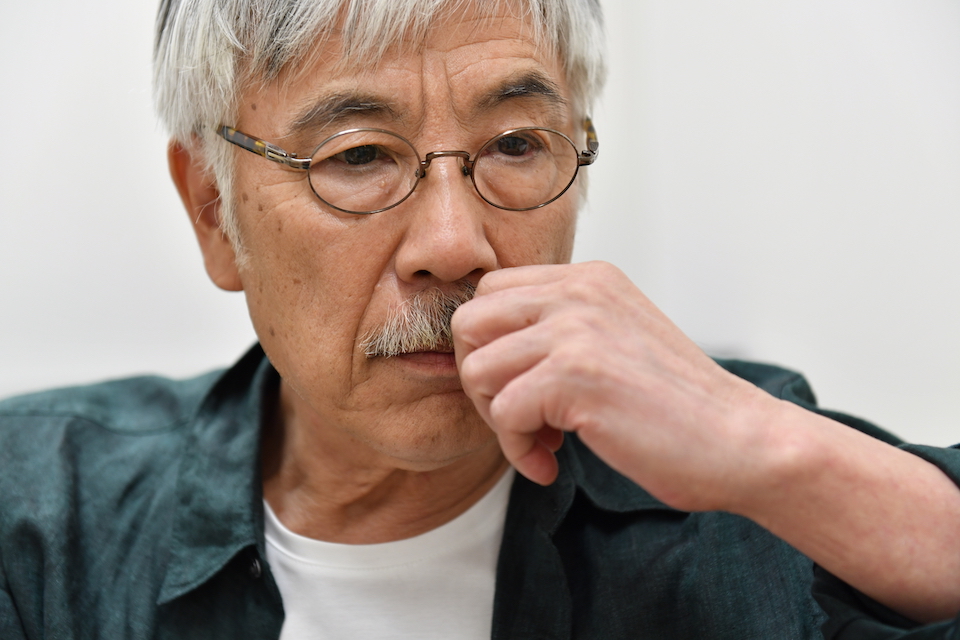
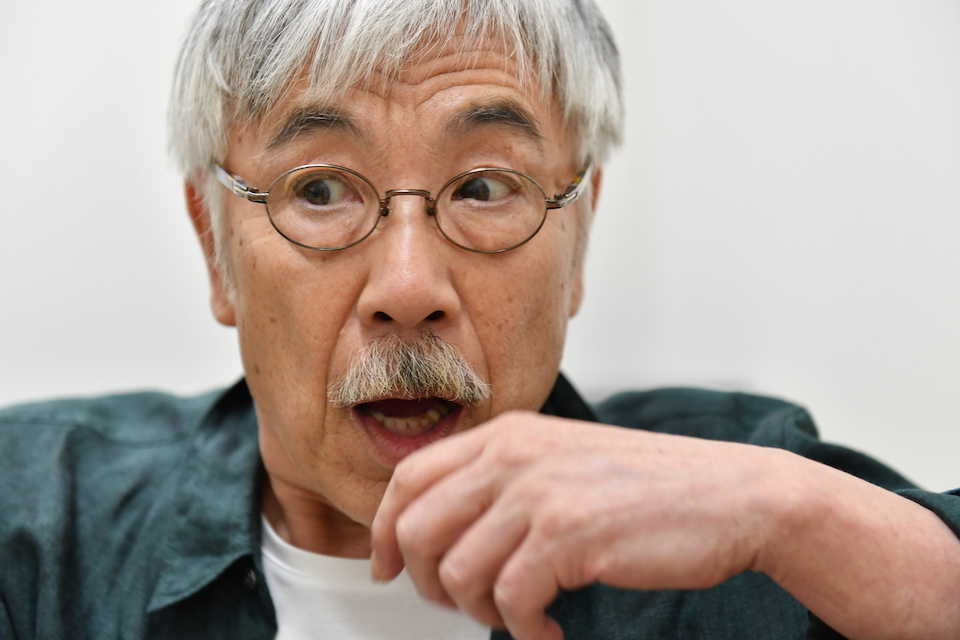
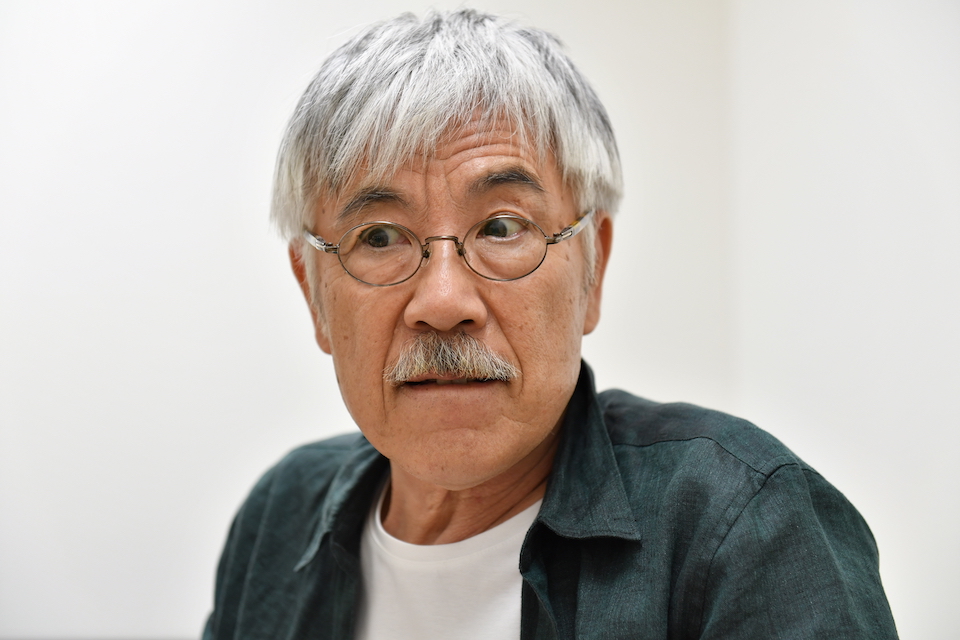
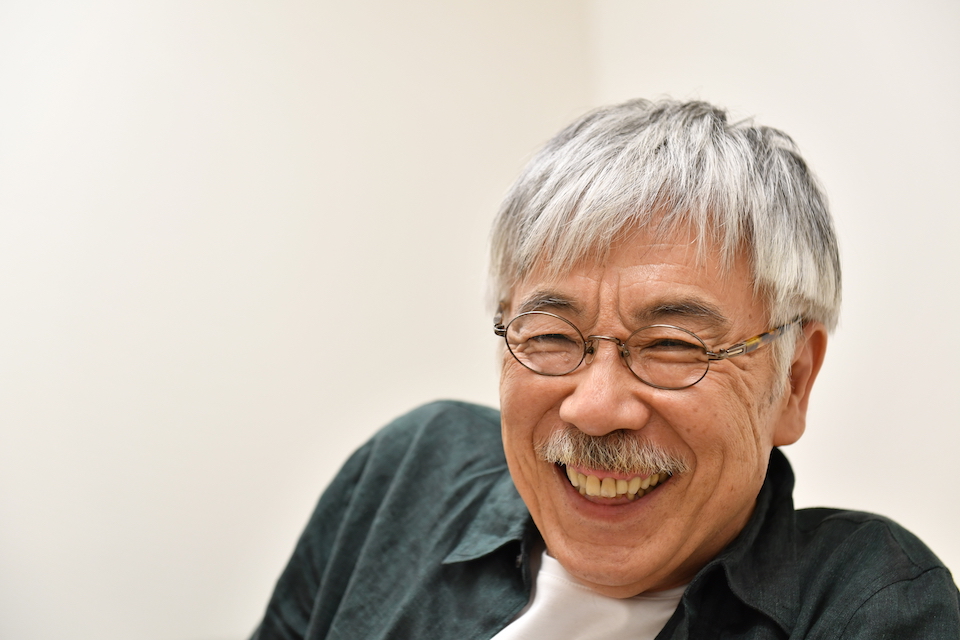
[Corporation] HILLTOP HOTEL




